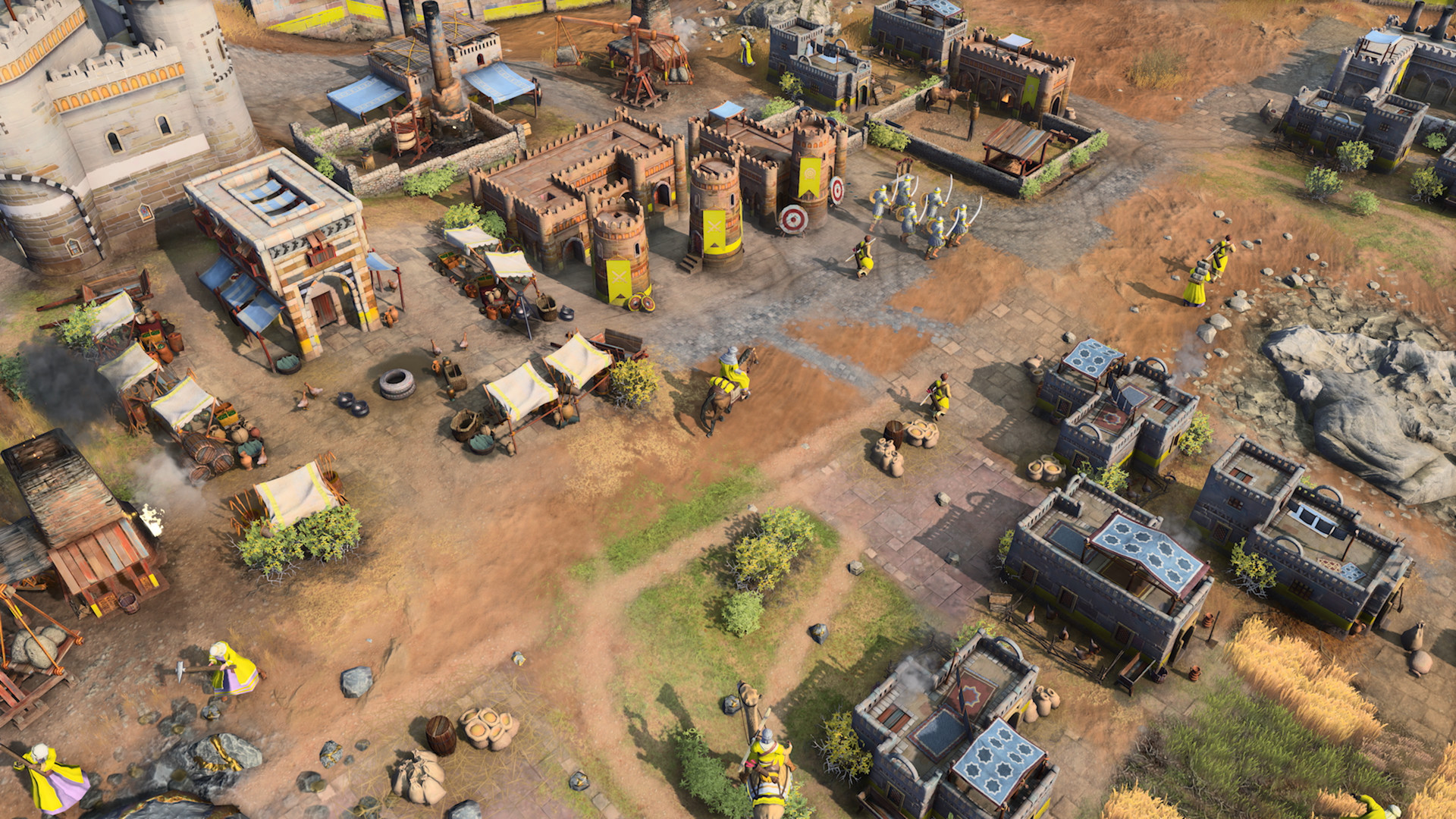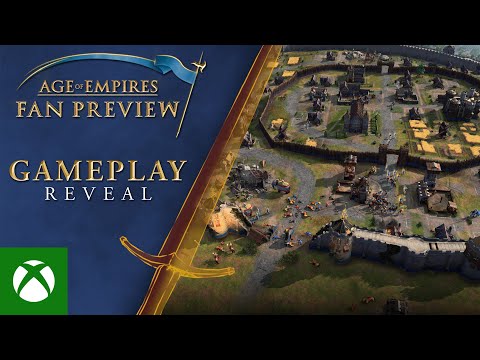
After 16 years the Age Of Empires franchise finally gets a new sequel but is the latest entry too similar to the old ones – or not enough?
Following the release of Command & Conquer in 1995 real-time strategy games became the most popular game type on the PC, with every Western publisher in the world rushing to make one. And yet within little more than five years the genre was essentially dead. The reason? As good as they were almost every game played exactly the same, whether it was set in deep space or the ancient world.
The original Age Of Empires was released in 1997, right in the middle of the genre’s golden age – although it was its sequel that was the franchise’s real gem and is still remembered today as one of the best examples of its type. Years before Xbox existed, it was also a rare example of Microsoft publishing a traditional video game, with them even going so far as to buy original developer Ensemble Studios a few years later.
They couldn’t stop Age Of Empires going the way of all other real-time strategies though and, despite multiple attempts to keep it going, Ensemble was eventually shut down and the series laid to rest… until Microsoft recently began to resurrect it with remasters of all three mainline games and new expansions. All of which has led to this: not only the first new mainline Age Of Empires game in well over a decade but the first big budget real-time strategy of any kind since Starcraft 2 in 2010.
Each of the original Age Of Empires games saw a linear progression through history, with the first game going from stone to iron age, the first sequel covering the Middle Ages, and the third going all the way up to the late 19th century. As you might expect, Age Of Empires 4 reverses historical direction, and you’ll be just as unsurprised to learn that this is a remake of Age Of Empires 2 in all but name.
That makes sense from a marketing point of view, but it does mean that the game is fundamentally ill-equipped to revive the real-time strategy genre, or even just Age Of Empires itself, as it’s still, very purposefully, the same game as always.
Although Age Of Empires always took things more seriously than the sci-fi schlock of Command & Conquer, or the fantasy melodrama of Warcraft, if you’ve played any real-time strategy before you’ve already played Age Of Empires 4. You can certainly understand why Microsoft would mandate this approach but after the initial excitement of seeing the old school gameplay with modern visuals, it does become somewhat deflating to realise that not surprising you is an intrinsic part of the game’s design.
Set in the Middle Ages, the game has eight playable factions, in the form of the Chinese, Delhi Sultanate, the Abbassid Dynasty, the Holy Roman Empire, the Rus, English, French, and Mongols. Those last four get their own story campaigns, based on real historical events such as the Hundred Years War, but disappointingly there’s no separate historical battles or map editor – just skirmish mode.
Whichever civilisation you take control of the basics are the same, as you construct building to provide food and resources, and eventually barracks and workshops. Age Of Empires’ faux realism extends to having to stockpile resources such as wood and food individually but otherwise it doesn’t really matter whether you’re mining gold or tiberium.
As in the previous games, you advance through four technological ages as you play, so that at the start of a match you only have access to basic weapons and building types. However, where Age Of Empires 4 most obviously breaks from series traditions is that its factions are asymmetric. That is to say that rather than all armies having basically the same units – that just look different with a few minor gameplay differences – the factions in Age Of Empires 4 are all completely unique.
This is far from the first to real-time strategy to work that way but it’s somewhat surprising giving the enduring popularity of Age Of Empire 2’s multiplayer is usually attributed to its carefully balanced, and largely symmetrical, units. That means it’s hard to judge how Age Of Empire 4’s multiplayer will go down until after launch but Microsoft already seems to have accepted that it’s a necessary sacrifice.
Symmetry is an awfully boring way to design any video game though, especially one that’s supposed to be based on wildly different cultures. In Age Of Empires 4 the English and French are the boring all-rounders, the Ryu and Ken of real-time strategy, while the Mongols are the most unique in that they’re completely mobile and can relocate bustling cities with no bother at all. Everyone has their own specialities though, from the Delhi Sultanate’s use of war elephants to the highly advanced tax regimes of the Chinese.
There are other smaller changes to the series template, such as religious victories now being gained by holding all holy sites at once for at least 10 minutes (the equivalent of several decades in game time). Age Of Empires has always taken influence from Civilization, as well as just Command & Conquer, and so there’s also a wonder victory condition, where you build a wonder of the world unique to your civilisation and make sure you hold onto it for 10 minutes.
The religious victory condition is a lot more fun this way round (you used to have to collect relics) but whether you try to hold back on the violence or not everything is remarkably easily to organise, given the whole point of a real-time strategy is that you simply point and click where you want a unit to go or who you want them to fight. With a lot of the trade-related complications from Age Of Empires 3 removed the game feels very streamlined and approachable even to complete novices.
There are also a number of smaller improvements to the game, such as greater flexibility in positioning groups of units and the option to hide them in forests, but the biggest failing is the surprisingly poor graphics. In isolation they look okay, although no better than the recent remasters, but soldiers and calvary still trot around the landscape in a very artificial way – running at each other at high speed only to then stand slightly aside and lightly jab at each other.
More: Games news
New PS5 UK restock at GAME and Argos this week as EE get more consoles
My Friend Peppa Pig review – playing the cartoon
Guardians Of The Galaxy game review – avenging the Avengers game
The physics of battle are very weak and yet this seems to be a purposeful attempt to retain the look and feel of the originals, which seems especially unnecessary given the remasters. We don’t know whether that’s the same excuse for why the pathfinding is so bad, but it also seems like it’s stuck in 1999. Everything is clearly supposed to be like this, and there’s no denying the game is entertaining, but nostalgia is ultimately a hollow pleasure and, like indulging in too much cake, you only end up feeling guilty and slightly bilious by the end of it.
Age Of Empires 4 is a fine real-time strategy but it’s nowhere near ambitious or different enough to revive the genre’s fortunes. Given Age Of Empires 2 still has the more robust multiplayer mode (and more options in general at the moment) it’s arguable whether this is even the best game in the series. The world doesn’t need two Age Of Empires 2 games and this feels like a missed opportunity to create a new beginning for the franchise.
Age Of Empires 4 review summary
In Short: A highly competent but disappointingly unambitious real-time strategy that fails to move either the genre or the Age Of Empires franchise forward.
Pros: As a pseudo-remake of Age Of Empires 2 it works very well, with simple and accessible controls. Four enjoyable campaigns and the asymmetric factions are very welcome.
Cons: The game has far too much reverence for Age Of Empires 2, with the graphics, AI, and general lack of innovation suffering as a result. Multiplayer is currently an unknown quantity and some traditional modes are missing.
Score: 7/10
Formats: PC
Price: £49.99
Publisher: Xbox Game Studios
Developer: Relic Entertainment and World’s Edge
Release Date: 28th October 2021
Age Rating: 12
Email gamecentral@metro.co.uk, leave a comment below, and follow us on Twitter.
MORE : Nintendo cancels Christmas by delaying Advance Wars remake
MORE : How to make XCOM 3 the perfect strategy game – Reader’s Feature
MORE : Gears Tactics review – Gears Of War’s strategy turn
Follow Metro Gaming on Twitter and email us at gamecentral@metro.co.uk
For more stories like this, check our Gaming page.
